1. To improve your students’ thinking skills and problem-solving abilities.
2. To get easy-to-perform experiments that engage students in the topic.
3. To make your physics lessons waaaaay more cool.
1. To improve your students’ thinking skills and problem-solving abilities.
2. To get easy-to-perform experiments that engage students in the topic.
3. To make your physics lessons waaaaay more cool.
—from the Introduction to Hard-to-Teach Biology Concepts, Revised 2nd Edition
—from the Introduction to Hard-to-Teach Biology Concepts, Revised 2nd Edition
Classroom science centers
By Mary Bigelow
Posted on 2014-08-29
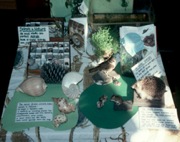 One of my goals this year is to focus more on science. I teach at the elementary level (third grade), and I’m thinking of setting up a science corner in the classroom with materials and activities for students. Rather than reinventing the wheel, do you have any ideas?
One of my goals this year is to focus more on science. I teach at the elementary level (third grade), and I’m thinking of setting up a science corner in the classroom with materials and activities for students. Rather than reinventing the wheel, do you have any ideas?
—Kate, Davenport, Iowa
In a school I visited, the second grade classes were doing lessons on butterflies. Each classroom had a cage with chrysalises and students were to observe how the adult butterflies emerged. In one classroom, the teacher had created an elaborate and colorful bulletin board about butterflies, but the cage was on a table with unrelated materials in a back corner of the room. In another classroom, the cage was an integral part of a science center. There were books on caterpillars and butterflies, pictures of common local species, a hand lens, a ruler, and student drawings. The center was labeled with questions for students to consider as they made their observations. Students were invited throughout the day to observe the chrysalises and record their observations, drawings, or questions in a log that was part of the center. Both teachers referenced the butterfly activity during the morning meeting, but I suspect that the classroom with the interactive center fostered more student involvement and interest.
Some classroom science centers (also called science stations or tables) include activities for students to do on a rotating basis. This is useful when there are not enough materials for an entire class, when you want to provide a choice of activities, or for providing alternative or more advanced activities for interested students. These centers include directions, and the activities should be safe enough for students to do independently. You should have procedures in place for how and when students access the center.
Creating centers for each unit can be time-consuming for the teacher, especially during the first year. An alternative is to have students contribute to them, giving students ownership in the project. Blogger and retired educator John Paull describes a science table as an integral part of his teaching:
The science table, placed close to a wall that is covered with display paper and has an electrical outlet near the floor, has always been a significant area in my elementary and middle school classrooms.
Why? Because a science table helps me create and sustain the appropriate environment in which to build a community of active, inquisitive learners. A well-displayed, interactive science table appeals to students’ sense of curiosity and promotes interest, discussion and research.
What is a science table? It’s a table space first owned by me, then maintained and owned by the class. It’s a table on which to display Mother Nature’s delights from the first day of school on. The items (rocks, fossils, shells, feathers, bones, plants, whatever catches one’s eye) are carefully displayed, labeled, and accompanied with questions, pictures, reference books, magnifying glass and binocular microscope.
From the first day of school, I start the day with a science table ritual. On Day One, I tell everyone what’s on the science table, inviting the students, at the appropriate time, to take a closer look. I then invite them to volunteer to look after the table.
Once a routine has been established, I ensure the table’s contents constantly change, either by me or the students bringing in different interesting delights.
(Pictures of his table can be found here and his blog has more suggestions for elementary teachers.)
I had a science table in my seventh grade classroom, in addition to the tables at which students worked. Students who “had nothing to do” could go to the table and explore what was there. The table always had some basic components, such as a dissecting microscope and metric rulers. At the beginning of each unit, I assigned several students to go to the library and find six to eight books related to the topic (the librarian was alerted ahead of time). Over the years I amassed a collection of pictures and specimens, but I invited students to contribute. For example, in the fall, we did a unit on fungi. Many of my students went hunting in the local gamelands. As a result, we usually had a great collection of mushrooms, puffballs, bracket fungi, and lichens to explore. Each was tagged with where it was found and who brought it in, just as in a museum.
There are no hard and fast rules, and the size or complexity of your “corner” depends on the space you have. Even a small table can be effective. Start small and give students opportunities to contribute and make suggestions.
Related blogs:
Photo: John Paull
Outdoor Science Preconference Workshop at NSTA’s Richmond Conference This Fall
By Wendy Rubin, Managing Editor, NSTA Press
Posted on 2014-08-27
 If you’ve thought about taking students outdoors to learn science, this preconference workshop in Richmond, Virginia, on Wednesday, October 15, 2014, will provide the tools you need to be successful. Teachers can expect to take part in practical, hands-on strategies correlated to the NGSS that get students engaged in active learning. Engineering practices will be considered with questions such as “How does a bird engineer a nest?” NSTA Press author Steve Rich will cover additional strategies, such as the integration of children’s literature, mathematics, and social studies into outdoor science. Participants will leave with resources that will help make teaching science outdoors a powerful learning experience for their students. All participants will receive a copy of Bringing Outdoor Science In: Thrifty Classroom Lessons, a $25.95 value. Continental breakfast for participants is included in the ticket price. The workshop takes place in conjunction with the NSTA Area Conference in Richmond, Virginia.
If you’ve thought about taking students outdoors to learn science, this preconference workshop in Richmond, Virginia, on Wednesday, October 15, 2014, will provide the tools you need to be successful. Teachers can expect to take part in practical, hands-on strategies correlated to the NGSS that get students engaged in active learning. Engineering practices will be considered with questions such as “How does a bird engineer a nest?” NSTA Press author Steve Rich will cover additional strategies, such as the integration of children’s literature, mathematics, and social studies into outdoor science. Participants will leave with resources that will help make teaching science outdoors a powerful learning experience for their students. All participants will receive a copy of Bringing Outdoor Science In: Thrifty Classroom Lessons, a $25.95 value. Continental breakfast for participants is included in the ticket price. The workshop takes place in conjunction with the NSTA Area Conference in Richmond, Virginia.
More information and registration details can be found here: www.nsta.org/richmondoutdoor
Learn What Science Teachers Are Reading
By Carole Hayward
Posted on 2014-08-27


You are what you read. As many teachers know, summer reading requirements don’t just apply to students. In the fields of science, many teachers never stop reading about what is happening and where their field is evolving. Engaging students and creating exciting classroom investigations and activities means reading up not only on subject-specific resources, but also best methods for instruction.
But how do you know where to look for well-written, relevant, and fun science books? Whether on a mobile device, computer, or print, teachers can get in the back-to-school spirit by reading the best science books reviewed and rated by their peers. As the summer wraps up, use your next block of 45 minutes to find out what science teachers are reading:
- Get What Science Teachers Are Reading and Book Beat.
NSTA publishes two monthly bulletins, What Science Teachers Are Reading and NSTA’s Book Beat, to announce new resources and highlight tips and lesson ideas in publications. Each issue has a theme and related products to help you expand your scope of knowledge. In this the e-newsletter of NSTA Press, you’ll also find special offers or discounts active in NSTA’s online Science Store. Browse back issues of NSTA’s Book Beat and sign up to receive future issues.
- Put a pin in it.
NSTA is on Pinterest! Follow the NSTA Pinterest board What Science Teachers Are Reading, which offers an easy-to-view image collection of the newest NSTA offerings. Create an online reading list, get up-to-date publishing announcements, and enjoy instant notice of special offers or discounts on NSTA products. Pinpoint what you need in your classroom—and share with others.
- Consult the winners.
This is the year to consult the Outstanding Science Trade Books K-12 list. 2014 was the longest list of books in the program’s 42-year history. Selected by a committee of educators across the nation with an emphasis on applications for Next Generation Science Standards (NGSS) and Common Core State Standards (CCSS). These titles reflect the best in subject matter and inquiry—with the right dose of imagination.
Literature is an essential partner for scientific inquiry. Scientists must be able to read and write to fully explore and prove their ideas. NSTA is ready to help you find what you and your students need to read next.
More Time?
NSTA launched a line of Multi-Touch books full of gorgeous color photography, dynamic enhancements, and interactive features that enable you to learn, share, and explore. Animations, simulations, and video bring content to life, while pop-up review questions and special notes help underscore the most crucial points of knowledge. Each e-book is correlated to the Disciplinary Core Ideas of the NGSS.
Learn more.
Action research on notemaking/taking
By Mary Bigelow
Posted on 2014-08-26
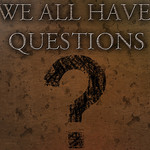 In your response to my question about notetaking, you suggested “action research” on notetaking/notemaking as a professional development project. How would I go about beginning such a process? I have the question but I’ve never tackled something of this nature.
In your response to my question about notetaking, you suggested “action research” on notetaking/notemaking as a professional development project. How would I go about beginning such a process? I have the question but I’ve never tackled something of this nature.
—Kelly, Raleigh, North Carolina
Action research is inquiry or research focused on efforts to improve student learning. It typically is designed and conducted by teachers or teams of teachers who analyze the data from their own classrooms to improve their practice and student learning. Action research gives teachers opportunities to reflect on their teaching, explore and test strategies, assess the effectiveness of the strategies, and make decisions about which ones to use and for which students they might be effective. Action research uses the types of thinking and problem-solving we want our students to develop.
The response to your original question on note taking referenced a recent study, “The Pen Is Mightier Than the Keyboard: Advantages of Longhand Over Laptop Note Taking” (summarized here) This study compared note taking with pen and paper versus typing notes on a laptop keyboard. You are wondering about a variation on this—handwritten paper-and-pencil notes vs. notes written on a tablet with a stylus.
Action research models generally have several components, which I’ve annotated with some thoughts about your area of interest:
- Identify and fine-tune a focus area or research question. Some ideas to consider: Would you give notes to students to copy or will they make their own? If the latter, what level of experience do they have with their own note taking/making? Will you require a particular style of notes (outline, Cornell style, concept map, highlighting, margin annotating) or allow the students to choose their own? How proficient are students with writing and drawing with a stylus? (If they are just learning, it could interfere with the quality or quantity of notes they take). If they take or make notes during a lecture or video presentation, time and the pacing of the information also must be considered. You may opt to have them take or make notes from text material they can reread or a video they can pause and review. What do you expect students to do with their notes later on? Do students have access to their notes when they are finished? Do they review from them? Use them in subsequent activities or assessments? Archive them for later? Revise them?
- Design a strategy and collect data. If you have more than one section, you could try each strategy in a different class. Reverse the strategy in the next unit so students a chance to try both strategies. You may need to try the strategy during several lessons if students are novices at notetaking. Your data can be qualitative and quantitative. As the students proceed, listen to their conversations and observe them at work. (You could use photographs or videos to document the process.) Note the students who seem to struggle with either strategy. Examine what students write in their notebooks or on the tablets, describing the accuracy, structure, and content of the notes. Ask questions about their understanding of the purpose of note taking/making. Observe how and when students use their notes. Compile the results of formative and summative assessments.
- Analyze and interpret the data. Document the impact of each strategy. Review if or how the quality and structure of student notes correlates with their assessments. Determine how different note taking/making styles lend themselves to the two strategies. Is there a pattern in how different students react to the strategies? Observe and follow up with students who become frustrated and those display confidence and creativity. Debrief with the students on their understanding, insights, or feelings about the results of this informal study. Does there appear to be a difference in assessment scores between the two strategies?
- Develop an action plan. Depending on your results and the experience level of your students, you may decide that some students may need additional modeling and scaffolding as they take on more responsibility for making and using their notes with either strategy. You may decide to try additional apps for note taking/making. If implementing your action plan leads to more questions, the action research cycle continues.
Action research is classroom-based, not quite as structured as research conducted by universities and think tanks. It’s very personalized, and other teachers can get ideas for their own classrooms from it. It’s not at the level of research published in peer-reviewed research journals. But I’ve been to many NSTA conferences and read many NSTA journal articles in which the teacher-researchers share what they did. My own action research helped me become a better teacher.
Resources:
Photo: http://tinyurl.com/mp49bu5
Where Can I Find Free or Low-Cost Resources and Opportunities for Science Teachers?
By Carole Hayward
Posted on 2014-08-21
Free or low-cost programs and materials can help teachers stretch their tight budgets. NSTA member Sharon Cumiskey has turned to NSTA’s weekly e-newsletter, NSTA Reports, to find quality teacher resources. Throughout her career, Cumiskey says she has benefited from opportunities she’s found in NSTA Reports. “Some of my fellow teachers ask me how I hear about the opportunities,” Cumiskey says. “I tell them that they just need to read NSTA Reports.”
Cumiskey: When NSTA sends out NSTA Reports, I like to check out the different sections...for free resources and opportunities for teachers. (Note from NSTA: Our popular NSTA Calendar is available online).
I look at programs for the summer months, in particular. At one point during my career I was a single parent, so I was happy if I could find a program that paid me over the summer. I sometimes would apply for three or four of the summer programs I read about in NSTA Reports. I took advantage of anything I could apply for. Fortunately, most of the time, I only got accepted to one program. Only once did I get accepted to two programs and I had to choose (one of the programs let me postpone my participation for a year).
One summer, I spent six weeks in Arizona studying astronomy with the American Astronomical Society Teacher Resource Agent (AASTRA) Program, which I read about in NSTA Reports. During AASTRA, we attended classes taught by astronomers, such as Dr. Mary Kay Hemenway from the University of Texas. We worked our way through a huge notebook of astronomy activities for middle school and high school and would practice teaching the activities to one another. After AASTRA ended, we got paid through a National Science Foundation (NSF) grant to make presentations about what we learned during the program. I gave presentations about AASTRA at NSTA conferences.
In 2010, I took part in MIT’s Science and Engineering Program for Teachers (SEPT), which I also learned about from NSTA Reports. SEPT is like an honor class for teachers. To be accepted into the program, you have to already have proven that you can network and that you give back to the science education community. You spend a week at MIT attending specific classes, networking with professors, and learning about MIT’s cutting-edge scientific research.
Thanks to NSTA Reports, I also found out about two programs—one on nanotechnology and the other on digital imaging—at the University of Massachusetts, Amherst. Both of those programs were very informative. In fact, I’m presenting about digital imaging at the NSTA conference in Richmond, Virginia, this coming October. The summer program gave us access to free digital imaging software, so I devised a genetics lesson for my students in which we analyze eye color. I recently wrote up the lesson, and it was published in Science Scope.
NSTA provided me with the opportunity to find out about and participate in these programs. So I feel like I owe something back to NSTA. That’s why I like to present at NSTA conferences.
What other opportunities have you learned about in NSTA Reports?
Cumiskey: A while ago, I read in NSTA Reports that Massachusetts (my state) was offering to pay the fee for a certain number of teachers to pursue National Board Certification. I didn’t have $2,500 to spend on the fee, especially for a certification that I might not get. But, since Massachusetts was paying the bill, I was willing to try. I received my National Board Certification, and it was worth doing. The certification has helped me get into some of the programs I’ve attended.
(Note from NSTA: For more information on NSTA Reports, see https://www.nsta.org/types/nsta-reports. Not an NSTA member? Learn more about how to join.)
Jennifer Henderson is our guest blogger for this series. Before launching her freelance career as a writer/editor, Henderson er was managing editor of The Science Teacher, NSTA’s peer-reviewed journal for high school science teachers.
Help Young Learners Discover Answers to Their “Why” Questions
By Carole Hayward
Posted on 2014-08-21
New I Wonder Why books from NSTA Kids
“Why can’t I see my shadow when it’s dark?” “Why are some sounds loud and some sounds soft?” “Why do we need machines?” “Why can’t I see colors when there is no light?”
Teachers and parents know how inquisitive young learners are. Now you can guide K–6 graders to discover answers for themselves as they explore the latest NSTA Kids books in the I Wonder Why series by Lawrence F. Lowery.
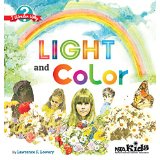 Light and Color is a child’s introduction to light and its relationship to the color of objects. This book for young children lays a foundation for science concepts students will learn in middle school that are only possible with early learning experiences.
Light and Color is a child’s introduction to light and its relationship to the color of objects. This book for young children lays a foundation for science concepts students will learn in middle school that are only possible with early learning experiences.
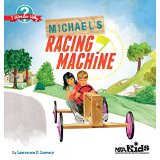 In Michael’s Racing Machine, Michael and his friend Luci build a racing car, and the story serves as a framework for explanations about machines. Simple machines, such as the lever, the wheel and axle, the inclined plane, and the pulley, are applications of science principles, so they can be used as an opportunity to investigate science principles.
In Michael’s Racing Machine, Michael and his friend Luci build a racing car, and the story serves as a framework for explanations about machines. Simple machines, such as the lever, the wheel and axle, the inclined plane, and the pulley, are applications of science principles, so they can be used as an opportunity to investigate science principles.
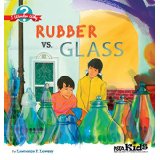 Rubber vs. Glass focuses on the idea of properties—the characteristics of objects or substances—by following a brother, Bill, and sister, Mary, through the exploration of two seemingly divergent substances: rubber and glass. Each of these substances, like all substances of the world, has its own set of properties.
Rubber vs. Glass focuses on the idea of properties—the characteristics of objects or substances—by following a brother, Bill, and sister, Mary, through the exploration of two seemingly divergent substances: rubber and glass. Each of these substances, like all substances of the world, has its own set of properties.
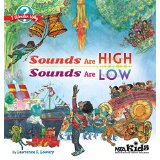 Sounds Are High, Sounds Are Low was written for children who are just beginning to learn how to read. It presents some fundamental concepts related to sounds—pitch and volume. Because this is a book on sounds, the sounds of words when they are spoken is part of the content. The semi-poetic structure, the repetitive rhythm of the words, and the reuse of consonant sounds in single-syllable words make the content easy to follow and remember.
Sounds Are High, Sounds Are Low was written for children who are just beginning to learn how to read. It presents some fundamental concepts related to sounds—pitch and volume. Because this is a book on sounds, the sounds of words when they are spoken is part of the content. The semi-poetic structure, the repetitive rhythm of the words, and the reuse of consonant sounds in single-syllable words make the content easy to follow and remember.
 All things—people, animals, plants, and objects—cast shadows of their own particular shape. Through Dark as a Shadow, the reader learns that it is possible to identify most objects by their shadow shapes and that a shadow can be obtained at any time of day or night if there is a light, and object, and something for the shadow to fall on.
All things—people, animals, plants, and objects—cast shadows of their own particular shape. Through Dark as a Shadow, the reader learns that it is possible to identify most objects by their shadow shapes and that a shadow can be obtained at any time of day or night if there is a light, and object, and something for the shadow to fall on.
International Reading Day is September 8, and these NSTA Kids titles have a universal appeal. NSTA is offering a 10 percent discount on the NSTA Kids books until August 22. When ordering any of the NSTA Kids books, enter the promotion code NEWKID.
New I Wonder Why books from NSTA Kids
“Why can’t I see my shadow when it’s dark?” “Why are some sounds loud and some sounds soft?” “Why do we need machines?” “Why can’t I see colors when there is no light?”
Teachers and parents know how inquisitive young learners are. Now you can guide K–6 graders to discover answers for themselves as they explore the latest NSTA Kids books in the I Wonder Why series by Lawrence F. Lowery.



